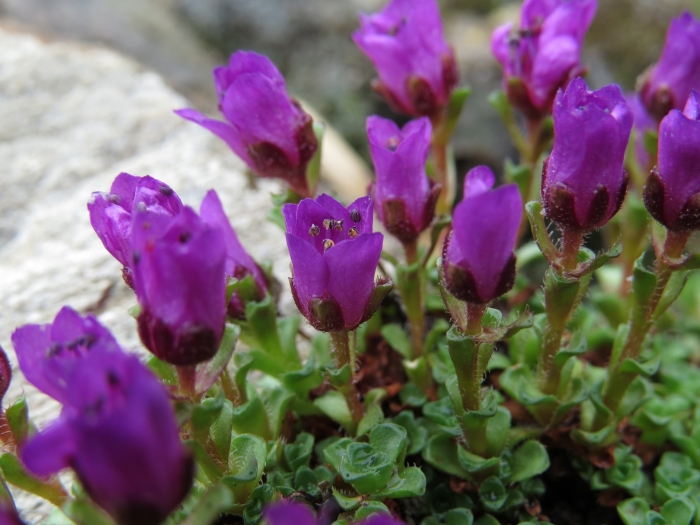Purple Saxifrage
(Saxifraga oppositifolia)
Purple Saxifrage (Saxifraga oppositifolia)
/
/

Jack Bindernagel
CC BY 4.0
Image By:
Jack Bindernagel
Recorded By:
Copyright:
CC BY 4.0
Copyright Notice:
Photo by: Jack Bindernagel | License Type: CC BY 4.0 | License URL: http://creativecommons.org/licenses/by/4.0/ | Rights Holder: Jack Bindernagel | Publisher: iNaturalist | Date Created: 2023-08-07T12:48:23-07:00 |

























Estimated Native Range
Summary
Saxifraga oppositifolia, commonly known as purple saxifrage, is a low-growing, mat-forming perennial herb that thrives in the harsh conditions of the high Arctic and alpine regions, including the Alps, Rocky Mountains, and tundra environments. It is particularly adapted to cold temperate to Arctic habitats, often found on rocky substrates such as alpine scree and moraines, from sea level up to 3281 feet (1000 meters). This resilient plant forms dense mats with small, scale-like leaves and produces striking purple or lilac flowers that bloom early in the spring, often as soon as the snow melts.
Purple saxifrage is valued for its early flowering period and its ability to survive in extreme conditions, making it a popular choice for rock and alpine gardens. It is also of ecological importance, serving as a food source for caterpillars like Gynaephora groenlandica. In cultivation, it requires well-drained, gritty soil and full sun to part shade. While it is low maintenance, it is important to avoid overwatering to prevent root rot. Purple saxifrage has cultural significance, being designated as the territorial flower of Nunavut, a symbolic flower in Nordland, Norway, and the county flower of County Londonderry, UK.CC BY-SA 4.0
Purple saxifrage is valued for its early flowering period and its ability to survive in extreme conditions, making it a popular choice for rock and alpine gardens. It is also of ecological importance, serving as a food source for caterpillars like Gynaephora groenlandica. In cultivation, it requires well-drained, gritty soil and full sun to part shade. While it is low maintenance, it is important to avoid overwatering to prevent root rot. Purple saxifrage has cultural significance, being designated as the territorial flower of Nunavut, a symbolic flower in Nordland, Norway, and the county flower of County Londonderry, UK.CC BY-SA 4.0
Plant Description
- Plant Type: Herb
- Height: 0.1-0.2 feet
- Width: 0.5-0.5 feet
- Growth Rate: Slow
- Flower Color: Pink, Purple, White
- Flowering Season: Spring, Summer
- Leaf Retention: Evergreen
Growth Requirements
- Sun: Full Sun, Part Shade
- Water: Low, Medium
- Drainage: Fast, Medium
Common Uses
Border Plant, Low Maintenance, Rock Garden, Street Planting
Natural Habitat
Cold temperate to Arctic habitats, often found on rocky substrates such as alpine scree and moraines
Other Names
Common Names: Purple Saxifrage, Opposite-leaved Saxifrage
Scientific Names: , Saxifraga oppositifolia, Saxifraga amphibia, Saxifraga caerulea, Saxifraga meridionalis, Saxifraga oppositifolia f. oppositifolia, Saxifraga oppositifolia var. latina,
GBIF Accepted Name: